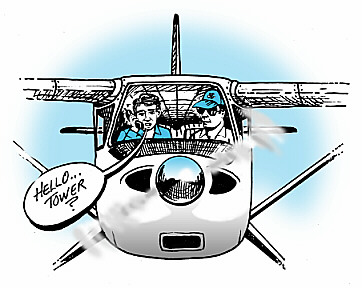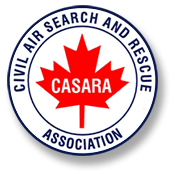To The Letter - Communications Issues
Flight Service Specialists
On reading the latest edition of Aviation Safety Letter (issue 3/98), I greatly appreciated the checklist on how to avoid runway incursions; we posted the checklist in a prominent place in our pilot briefing room. We would like to make one comment, however. At the beginning of the article, you forgot to mention that flight service specialists also should observe air traffic as part of their airport advisory service at uncontrolled aerodromes. We participate actively in a variety of programs designed specifically to avoid runway incursions.
As manager of the flight information station at Mont-Joli, I devote a great deal of time and effort to the problem of runway incursions. I also drafted a document to assist me with the annual refresher training that I give to machinery operators at the Mont-Joli, Rimouski and Baie-Comeau airports. I'm going to amend my course documentation to reflect the content of the article entitled I Thought That I Heard..., which I just read and consider very appropriate.
Gilles Allaire
Mont-Joli, Quebec
Casual Radio Transmissions
Reading your article on the dangers of casual radiotelephony (RT) in ASL 2/98 brought to mind the low standard of controller RT I encountered recently. At Toronto Pearson, I heard controllers issue clearances to airlines by using numbers only, with no airline call sign. This is unbelievable; there are over 50 airlines serving Toronto so you have flight number duplications. A flight could move on a clearance meant for someone else, with disastrous results.
Similarly, I heard general aviation (GA) pilots contact air traffic control (ATC) using call letters instead of phonetics and controllers issue clearances using letters only. Many letters sound the same over the air so again an aircraft could move on a clearance meant for someone else. The use of phonetics was indeed meant to avert mid-air collisions.
Recently ATC changed the wording on instrument landing system (ILS) vectoring to "join" the localizer, replacing the lengthy word "intercept". I heard a clearance to an airliner to "Fly 020 for the join." "For the join?" What kind of RT is that?
And all day I heard clearances to "the" VOR, "the" beacon, or "the" approach. What is "the"? Again, the risk is an aircraft heading for the wrong facility, in clouds, and hitting someone on the way. "Oh, sorry, I assumed he was going to the right beacon." He was going to "the" beacon all right.
Can we stop this sloppy, unprofessional, potentially deadly talk BEFORE we have a mid-air collision? — It would surely stop right after.
J.R. Desmarais
Toronto, Ont.
In defense of controllers and GA pilots, commercial and airline pilots also have poor RT discipline on occasions. Nevertheless, you raise a good point. It is up to all of us to shape-up or shut-up. — Ed.
Frequency Congestion
I would like to comment on question 3 of the self-paced study that was part of ASL 4/98. The question reads: "For airborne weather service, radio contact should be established with any in-range FSS on frequency ______ MHz." This question suggests that 126.7 MHz is the frequency that would always be used for obtaining en route weather information. The A.I.P. MET 1.1.4 is more correct in that it refers to en route services "normally" available on 126.7 MHz.
Frequency congestion on 126.7 MHz has been raised by pilots as a concern in a number of areas, particularly within uncontrolled airspace. In response to these concerns, alternate frequencies have been established at many flight service stations, remote communications outlets, and dial-up remote communications outlets. Pilots should be aware that, although 126.7 MHz is a common frequency and may be available, another frequency may be more appropriate. The current Canada Flight Supplement or NOTAM contains the current information regarding frequency availability and usage.
I expect that alternate frequencies will become even more common in the future. This may be necessary in order to ensure that pilots have suitable access to the en route frequency in order to broadcast their intentions and to co-ordinate their own separation from conflicting aircraft while operating in areas or conditions that require this. An additional statement in MET 1.1.4 may help to encourage pilots to check for an alternate frequency and, whenever one is available, use it for en route service.
Chuck Frankard
Safety and Service Design, NAV CANADA
Winnipeg, Manitoba
Chuck, the whole subject of en route services and frequencies will be revisited concurrent with the implementation of NAV CANADA flight information centre (FIC) concept. In the interim, existing equipment and procedures are quite acceptable. The Transport Canada office responsible for A.I.P. Canada will consider your suggestion to add a statement in MET 1.1.4 that would encourage pilots to check for an alternate frequency and, whenever one is available, use it for en route services.
Carol Verreault
Air Traffic Services Standards Inspector
Transport Canada
Communication Failure! No Sweat - I Have My Cell

I was reading about the ground collision between a Cessna 172 and a Diamond DA20 in ASL 4/98 and it reminded me of the dangers of flying incommunicado. Last year, while flying with an instructor, we faced a communication failure right after takeoff from Ottawa.
The vibration of the take-off roll jarred something loose and it knocked out the radios and the intercom. After we completed the communication failure procedure, I asked my instructor to take control as I reached into my flight bag and pulled out my cellular phone. Neither of us knew the tower’s phone number, so I called the flying club to get it from dispatch. I then called the tower and let them know our situation. We were cleared to land over the phone and given our taxi clearance back to the club.
Since this incident I make it a point never to fly without a fully charged cell phone. I also make sure I have the tower phone numbers of both my home base and other frequent destinations programmed into the phone. I noticed that the Canada Flight Supplement(CFS) does not have tower phone numbers listed for many fields. May I suggest that in the OPR, FLT PLN or directly in the COMM sections of the CFS, a TWR entry be made with the phone numbers of every controlled field’s tower.
Many pilots carry cell phones and I'm sure, if a rare communication failure were to occur, being able to call the tower while in flight to advise ATC of the situation would greatly improve the safety in the controlled zone.
Robert Schwartz
Ottawa, Ontario
The availability of a cell phone in such a case would certainly be advantageous. We have forwarded your suggestion to the CFS folks, and perhaps your letter will sell others to the idea of carrying a cell phone. — Ed.









